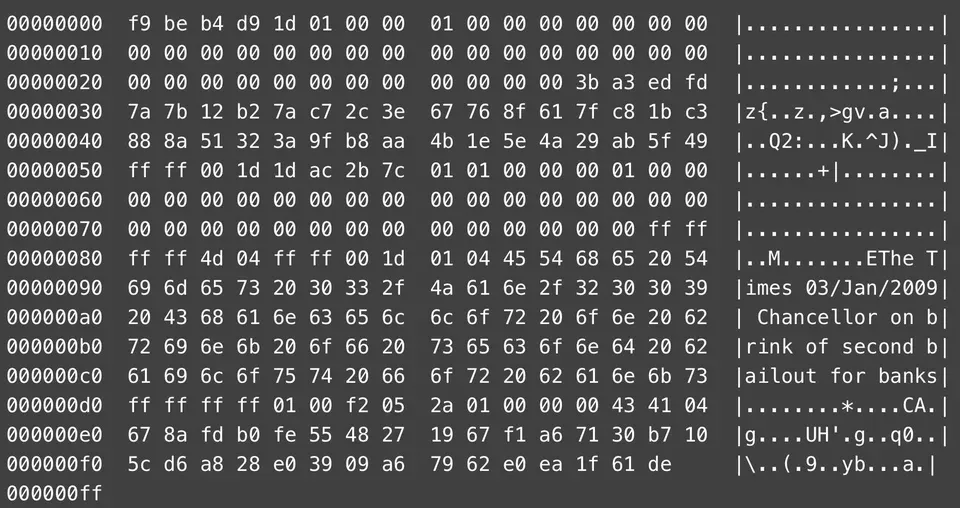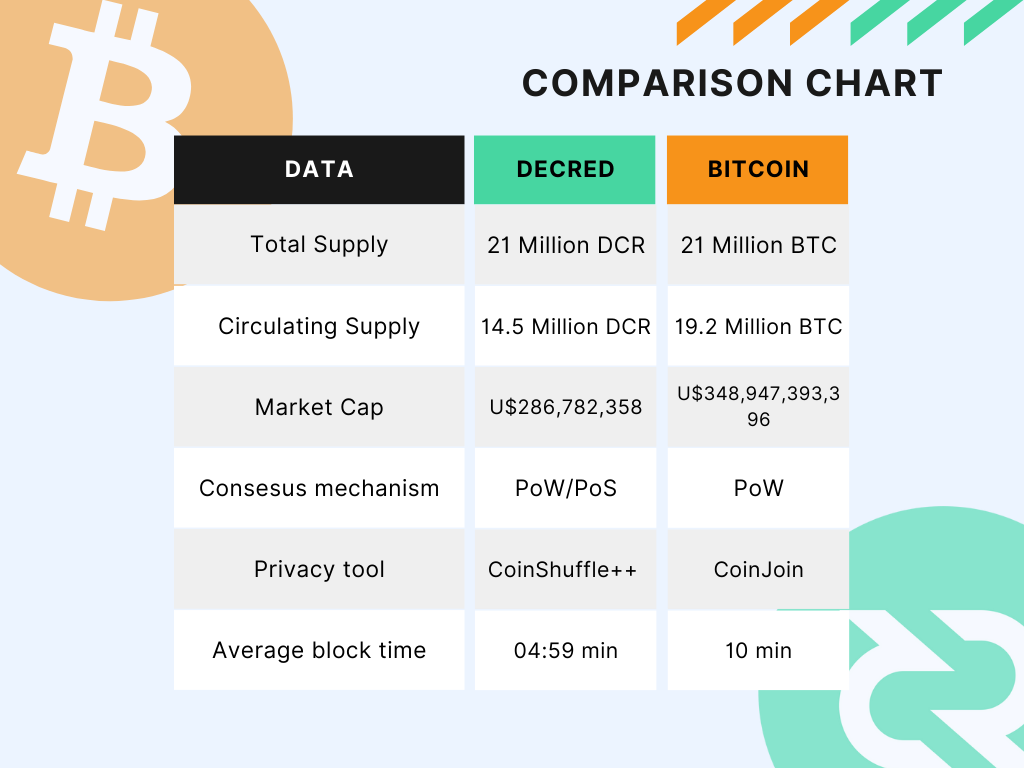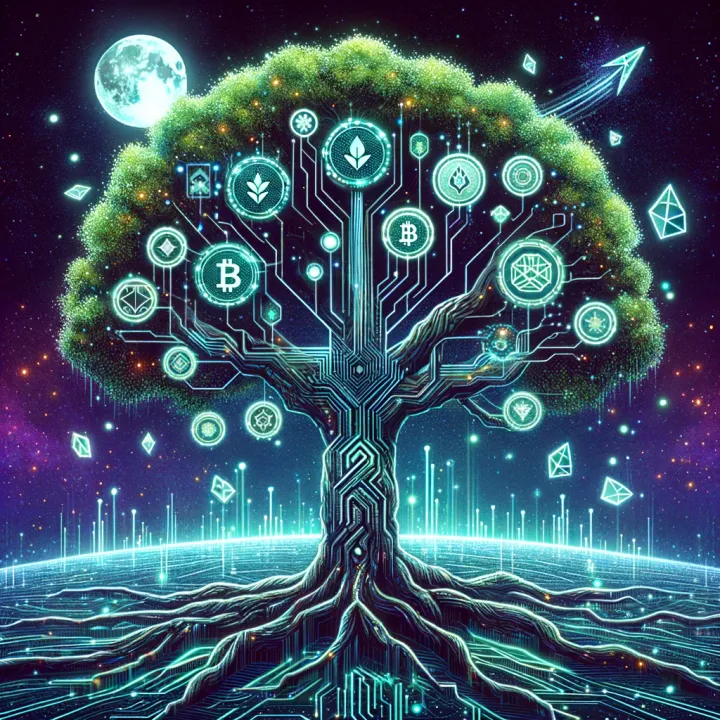Bitcoin remains the most important coin for the crypto market but Decred is more forward-thinking. Let's find out why!
On the 31st of October 2008, Satoshi Nakamoto published "Bitcoin: A Peer-to-Peer Electronic Cash System", a paper describing the function of a digital currency called Bitcoin. What was not imagined was that this article would change the course of history, creating one of the most innovative and unpredictable markets ever seen. Bitcoin's network was launched shortly after, on the 3rd of January 2009, having its first block mined in the same month, the so-called genesis block. The following message was embedded in it:
"The Words 03/Jan/2009 Chancellor on brink of second bailout for banks."

A reference to a headline from The Times newspaper about a failed attempt by the British government to stimulate the economy. This has been interpreted both as a date-setting for the first block and as a criticism of the prevailing banking system. The crypto market has taken those criticisms of the current financial system as inspiration.
Decred was built based on the Bitcoin code, despite that, it is a standalone crypto, not a Bitcoin fork. Work began in 2014 and launching was in February 2016. Decred presents itself as money evolved, an alternative store of value, with community-based governance integrated into its blockchain. One of the project goals is to prevent individuals from gaining a disproportionate influence over decisions, becoming a decentralized financial system. Let's take a look at how these two cryptocurrencies contribute to creating an alternative for the traditional financial system.
Operation
As the first cryptocurrency, Bitcoin has revolutionized the technology era in which we live. Satoshi Nakamoto described in his white paper a digital currency based on proof-of-work protocols that allow secure, peer-to-peer transactions without a centralized authority. As we know a proof-of-work mechanism requires miners to use computing resources to validate transactions. Proof-of-Work has proven to be a very safe system, but has also attracted a fair amount of criticism for their use of energy:
Appetite for Energy
The New York Times reported that in 2009 it was possible to mine one Bitcoin using a standard computer and a little amount of electricity. In 2021, if you wanted to mine one Bitcoin you needed to consume the electricity that an average American home would take nine years to use.
Centralization
The intense computational demands of proof-of-work contribute to the centralization of a cryptocurrency. This situation usually happens because large mining operations tend to centralize in a small number of hands, leading to few entities controlling most of the operations.
On the other hand, Decred uses a hybrid consensus blockchain. Block rewards used to be split in the following manner:
60% to Proof-of-Work miners
30% to Stakeholders (Proof-of-Stake)
10% to the Decred treasury
The change of this split reward began at the beginning of 2022, mainly because of miner centralisation and an entity called The Suppressor (TS). This/these entity were able to manipulate the DCR market behavior by having tremendous mining power and coin supply. Decred stakeholders understood this problem and voted the change the block reward split to:
10% to Proof-of-Work miners
80% to Stakeholders (Proof-of-Stake)
10% to the Decred treasury
Prioritizing Proof-of-Stake was the way found so Decred could reduce the impact of TS over time. Governance is one of the project's main strengths, and altering the split reward increased the importance of the Stakeholders, who decide all spending of the Decred treasury, rules changes, and validate blocks. The project is also the only blockchain in the space to be “hard fork only” and “fork resistant”, which means there will only ever be one chain, and the rules have to be followed explicitly.
Funding
With 10% of all block rewards directed to the Decred treasury, the project can Fund development and other initiatives approved on the Politeia platform. Every proposal vote must have a minimum Quorum of 20% of all available tickets, reaching at least 60% of "yes" votes. This way of funding ensures the sustainability of Decred and the debate of ideas between the community.
Bitcoin gets funds and workforce from different companies, there are no active rules for funding. Development and maintenance must be consensual among the network participants, just like Decred there are no single individuals or company that governs the development of Bitcoin. Development teams all around the world are responsible for proposing and initiating upgrades, which must be peer-reviewed by the developers who are actively working on Bitcoin.
Transactions and Privacy
Bitcoin functions as a peer-to-peer electronic cash, the network blockchain is responsible for recording every transaction between Bitcoin addresses. To send BTC, you must have access to public and private keys associated with the amount that will be sent. Those transactions work like messages, which need details to be completed, like inputs, amounts, and outputs. The main criticism involving Bitcoin transactions are related to their high average cost (U$7.6) and their low speed, every block requires approximately 10 minutes to be validated.
Bitcoin has been a privacy reference for a long time, but this scenario seems to be changing. Authorities can track Bitcoin transactions mostly because of off-ramps like exchanges that collect personal information about their clients. Coinjoin is the privacy tool used to protect the identity of Bitcoin users by requiring multiple parties to sign a digital smart contract to mix their coins in a Bitcoin transaction. The output of the transaction leaves participants with the same number of BTC, but with mixed addresses to make external tracking difficult. Decred also adopted a mixing protocol: Coinshuffle ++. With this process users can obfuscate ownership of DCR coins, addresses are fully anonymized and none of the peers or servers can link outputs and inputs.
Decred has the DCRDEX exchange as one of the project's best aces. It has no arbitrary fees, leaving only users to profit from their transactions. Custody of coins is guaranteed to users with the atomic swap technology. Even though DCRDEX is a Software built by Decred, cross-chain trades with Bitcoin, Litecoin, Zcash, and even Doge are available on the platform with more on the way.

Moving Foward
Bitcoin remains the most important coin for the crypto market. Variations in the value of BTC can create waves that interfere with the whole world of cryptocurrencies. Being the biggest also means innovations on the network tend to be contentious and slow. The current process for upgrading is soft fork only, which brings with it, its own future issues.
Decred is a more forward-thinking project that started with only a coin. But now has a full ecosystem including – wallets, block explorer, P2P exchange, governance platform, and recently launched a decentralized social media platform, Bison Relay. Bison Relay uses the Decred lighting network as the payment system and the underlying technology.
Do you think Bitcoin and Decred have more similarities or differences today? Leave a comment!






Comments ()